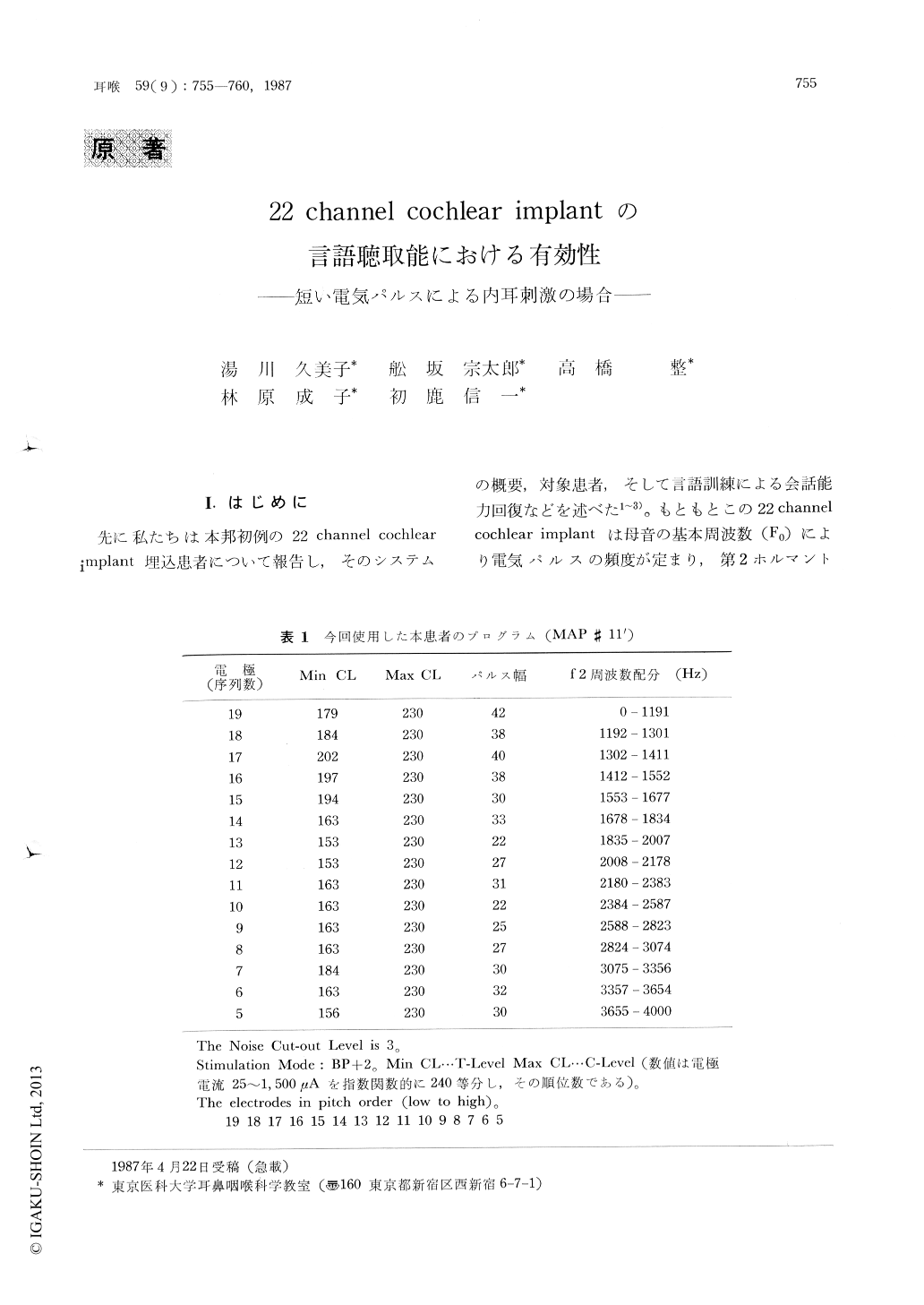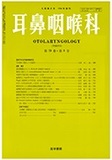Japanese
English
- 有料閲覧
- Abstract 文献概要
- 1ページ目 Look Inside
I.はじめに
先に私たちは本邦初例の22 channel cochlearimplant埋込患者について報告し,そのシステムの概要,対象患者,そして言語訓練による会話能力回復などを述べた1〜3)。もともとこの22 channelcochlear implantは母音の基本周波数(F0)により電気パルスの頻度が定まり,第2ホルマント(F2)の岡波数によって電極選定,同じくF2の振幅によって電気パルスの振幅が決定されるシステムとなっている。また子音に対してはそれぞれの子音に応じたランダムなパルス頻度で情報を送り込むものである。しかし本患者においては「方法」で述べるように,電気パルスの振幅制御に不確かさが生じたため,パルス幅を規定する力式をとった、つまり電気刺激量を振幅の大小による電気量の多少でなく,快適レベルを最大電流におけるパルス幅で規定する方式をとったわけである。いぎおい電流量の変化に対するラウドネスはきわめて急峻なものとならざるをえないが,これでも患者の、言語聴取能は満足すべきものとなった。したがって今回はこの結果について報告し,若干の考察を述べる。
A 22 channel cochlear implant was implanted in a 40-year-old woman with complete deafness.
The formant-based speech processing strategy was used, but a narrow pulse width was required because of difficulty in controlling the pulse amplitude.
The speech tracking scores using the cochlear implant with lip-reading achieved 24 bunsetsues per minute after 3.5 months' of training. Scores of vowel and consonant tests reached 70% and 54% respectively for the cochlear implant alone, and 100% and 73% for the cochlear implant plus lip-reading. This study also showed that cochlear stimulation with very narrow pulse widths can be useful to restore speech comprehension ability.

Copyright © 1987, Igaku-Shoin Ltd. All rights reserved.


